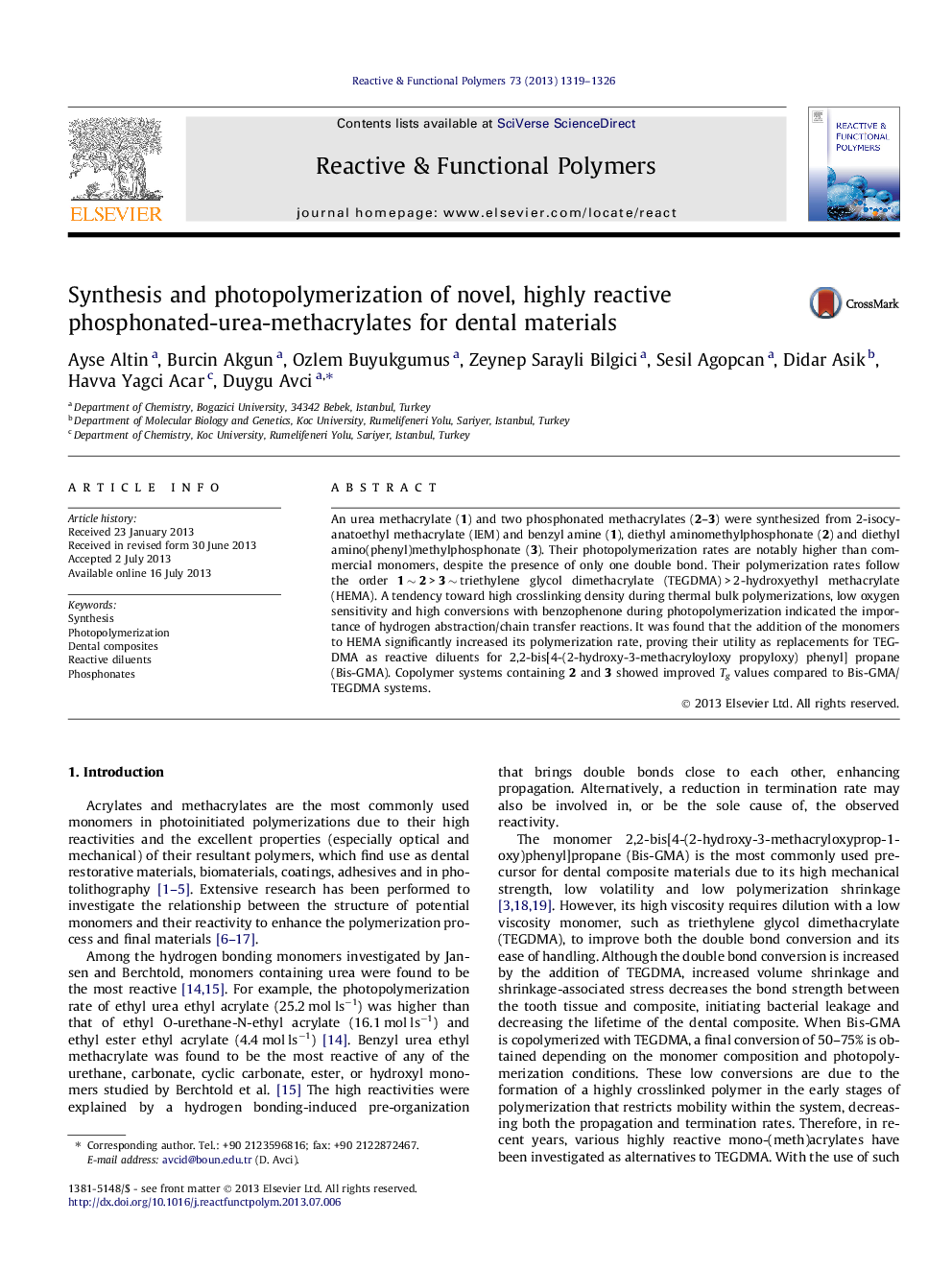| Article ID | Journal | Published Year | Pages | File Type |
|---|---|---|---|---|
| 5210029 | Reactive and Functional Polymers | 2013 | 8 Pages |
An urea methacrylate (1) and two phosphonated methacrylates (2-3) were synthesized from 2-isocyanatoethyl methacrylate (IEM) and benzyl amine (1), diethyl aminomethylphosphonate (2) and diethyl amino(phenyl)methylphosphonate (3). Their photopolymerization rates are notably higher than commercial monomers, despite the presence of only one double bond. Their polymerization rates follow the order 1 â¼Â 2 > 3 â¼Â triethylene glycol dimethacrylate (TEGDMA) > 2-hydroxyethyl methacrylate (HEMA). A tendency toward high crosslinking density during thermal bulk polymerizations, low oxygen sensitivity and high conversions with benzophenone during photopolymerization indicated the importance of hydrogen abstraction/chain transfer reactions. It was found that the addition of the monomers to HEMA significantly increased its polymerization rate, proving their utility as replacements for TEGDMA as reactive diluents for 2,2-bis[4-(2-hydroxy-3-methacryloyloxy propyloxy) phenyl] propane (Bis-GMA). Copolymer systems containing 2 and 3 showed improved Tg values compared to Bis-GMA/TEGDMA systems.
